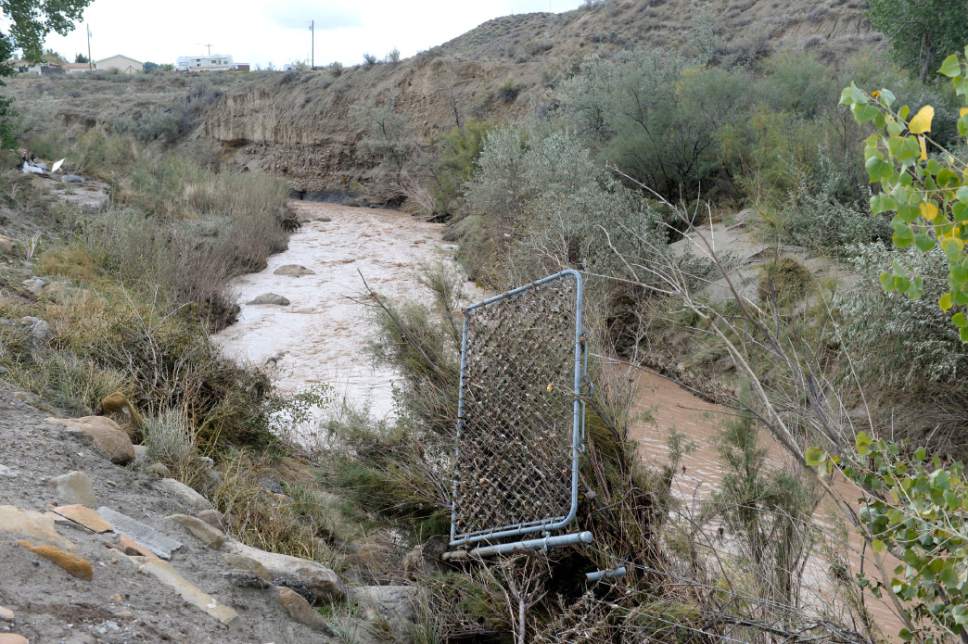This is an archived article that was published on sltrib.com in 2017, and information in the article may be outdated. It is provided only for personal research purposes and may not be reprinted.
Three environmental groups have joined forces to call for Rocky Mountain Power to relocate a landfill which released more than 2,000 cubic yards of coal ash into the Price River last summer.
The Sierra Club, HEAL Utah, and Utah Physicians for a Healthy Environment believe the landfill must be moved farther from the river to prevent future spills and protect communities downstream.
"Coal ash has some troubling components to it," said Matt Pacenza, executive director of HEAL Utah, "and we think piling it in a box canyon right next to a river doesn't adequately protect the health of nearby communities."
Rocky Mountain Power has agreed to pay the state just over $15,000 in penalties for the Aug. 4 spill, which washed an estimated 13.9 pounds of arsenic and 53.9 pounds of lead into the Price River in Panther Canyon during a flash flood.
Walt Baker, director of the Utah Division of Water Quality, said his division believes the spill was the result of factors outside the utility's control.
A Rocky Mountain Power consultant estimated the storm dumped 2 inches of rain between 2 p.m. and 4 p.m., qualifying it as a 100- to 400-year event — a storm so large that, statistically, it is expected to happen only once in 100 to 400 years.
The flooding overwhelmed a temporary stormwater collection system put into place while the landfill was being built, allowing water to push ash into the Price River.
Brian McInerney, a hydrologist with the National Weather Service, has said that although anything over an inch of rain per hour is capable of producing a flash flood, that rate of rain isn't unusual during the late summer in the Price area. In order to produce an abnormally large flash flood, McInerney said, Price would need to get more than 2 inches of rain per hour.
But it's not clear exactly how fast the rain fell or how severe the flooding was at the landfill site, because it is located in a blind spot not visible to National Weather Service radar.
Based on the Weather Service's statements, Pacenza said he does not believe the Aug. 4 event was truly an extraordinary incident.
"It was a nice size storm," he said, "not an earth shattering, get-your-canoes-and-wait-for-the-rescue-helicopters-to-come kind of storm."
Lindsay Beebe, with the Sierra Club's Beyond Coal Campaign in Utah, said that moving the landfill farther away from the river would prevent future spills, given that flash floods may not be all that uncommon in the Price area.
But in a statement, Paul Murphy, a spokesman for Rocky Mountain Power, said the landfill has since been "capped and closed with a highly engineered system specifically designed to prevent a release of any material into the environment.
"Unfortunately," Murphy continued, "the flooding event that triggered the coal ash runoff in question hit the area during the construction of the cap before all of the final design measures were in place."
Twitter: @EmaPen



